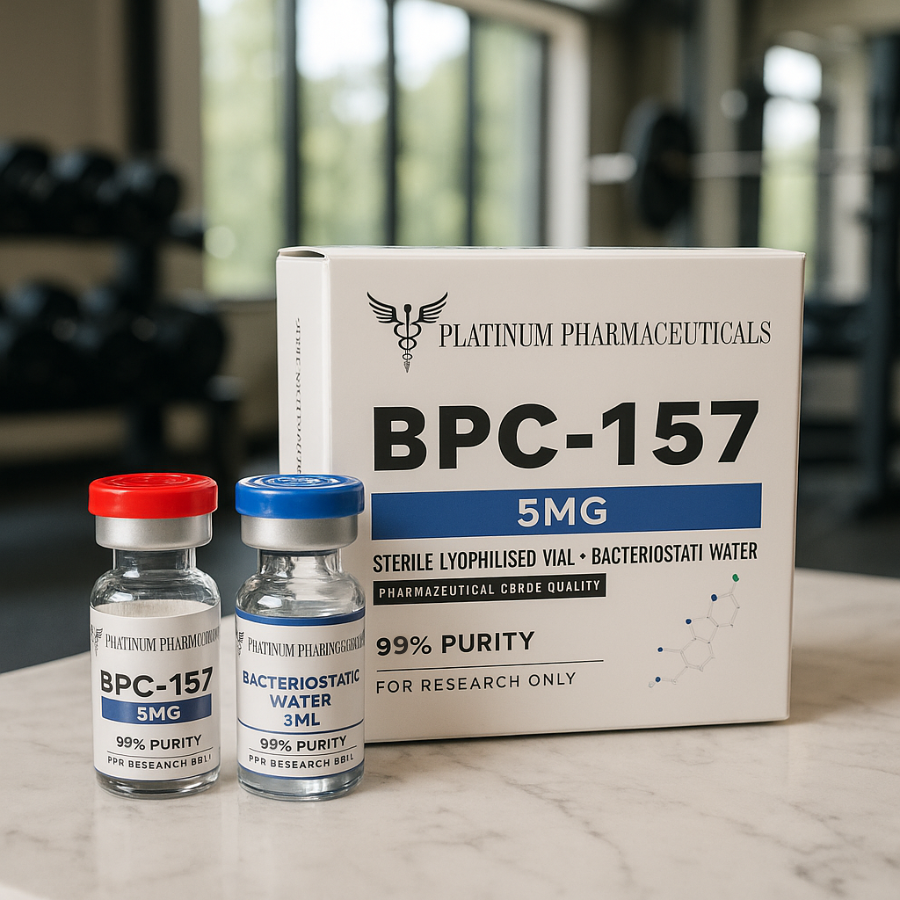BPC-157, or Body Protection Compound-157, is a synthetic pentadecapeptide composed of 15 amino acids, derived from a protein naturally present in human gastric juice. This peptide has attracted significant attention in scientific research for its potential to support healing, recovery, and overall health. In this article, we explore the promising benefits of BPC-157, supported by recent studies, and provide insights into why it has become a subject of interest for researchers and health enthusiasts.
What is BPC-157?
BPC-157 is a stable, synthetic peptide designed to replicate a fragment of the Body Protection Compound found in the stomach, where it contributes to tissue protection and repair. Its resistance to enzymatic breakdown allows it to remain active in the body, enabling systemic effects that extend beyond the gastrointestinal tract to various tissues. Researchers are particularly interested in its ability to promote tissue regeneration and modulate inflammatory responses, as evidenced in numerous preclinical studies.
Potential Benefits of BPC-157
1. Accelerated Tissue Healing and Recovery
BPC-157 is widely studied for its potential to enhance the healing of tissues such as muscles, tendons, ligaments, and skin. Preclinical research in animal models has demonstrated its ability to accelerate recovery from injuries. For instance, a 2011 study published in the Journal of Applied Physiology showed that BPC-157 promoted tendon healing in rats by enhancing tendon outgrowth, cell survival, and migration. These findings suggest potential applications in fields like sports medicine and rehabilitation, where rapid recovery is critical.
A 2022 study in Biomedicines further highlighted BPC-157’s regenerative effects on striated, smooth, and cardiac muscle tissues, underscoring its versatility. Researchers attribute these benefits to the peptide’s ability to stimulate collagen production and fibroblast activity, key components of tissue repair.
2. Support for Gastrointestinal Health
Given its origin in gastric juice, BPC-157 shows significant promise in supporting digestive health. Studies have explored its protective effects on the gastrointestinal tract, particularly in conditions such as ulcers, inflammatory bowel disease (IBD), and leaky gut syndrome. A 2018 article in Current Pharmaceutical Design noted that BPC-157 exerts systemic effects in the digestive system, potentially alleviating symptoms of irritable bowel syndrome (IBS), gastrointestinal cramps, and Crohn’s disease. Its cytoprotective properties strengthen the mucosal barrier, reducing inflammation and promoting gut lining repair.
This makes BPC-157 a compelling subject for research into chronic digestive disorders, as its stability in acidic environments enhances its potential for oral administration.
3. Reduction of Inflammation
BPC-157 has demonstrated potential to regulate inflammatory pathways, offering benefits for both acute and chronic inflammation. A 2019 study in Cell and Tissue Research found that BPC-157 reduced joint inflammation in arthritis models in animals, with sustained benefits over time. By modulating inflammatory signals, the peptide may help reduce swelling, pain, and discomfort, supporting faster recovery and improved mobility.
This anti-inflammatory effect is particularly relevant for individuals researching solutions for inflammation caused by physical activity or injury. BPC-157’s interactions with pathways such as FAK-paxillin and VEGF receptors are believed to contribute to these properties.
4. Neuroprotective and Cognitive Support
Emerging research suggests that BPC-157 may offer neuroprotective benefits, potentially supporting the central nervous system (CNS). A 2020 study in Neural Regeneration Research investigated BPC-157’s effects in rats with stroke and hippocampal ischemia/reperfusion injuries, finding that it promoted neural repair and functional recovery. The peptide’s influence on the gut-brain axis, which facilitates communication between the digestive system and the brain, may underpin these effects.
BPC-157 has also been studied for its modulation of neurotransmitters like dopamine and serotonin, which could support mood regulation and cognitive health. While these findings are preliminary, they highlight exciting possibilities for neurological research.
5. Antioxidant and Organ-Protective Properties
BPC-157 exhibits antioxidant effects that help neutralize oxidative stress markers, such as nitric oxide and malondialdehyde, in the body. A 2020 study in Regulatory Toxicology and Pharmacology demonstrated its protective effects on organs like the liver, pancreas, and heart. By mitigating oxidative stress, BPC-157 may prevent tissue damage and support overall organ health.
Its ability to promote angiogenesis, or the formation of new blood vessels, further enhances tissue repair and organ function by improving blood flow to affected areas, making it a valuable subject for research into systemic health.
Recent Research and Developments
Recent studies continue to expand our understanding of BPC-157’s potential. A 2025 review in Molecules emphasized its pleiotropic effects, highlighting its efficacy in preclinical models for conditions ranging from tissue injuries to CNS disorders. The review noted its favorable safety profile in animal studies, with minimal adverse effects, positioning it as a candidate for further human research.
A 2023 human clinical trial, referenced in Fullscript, provided insights into BPC-157’s potential for chronic pain management. The study found that oral BPC-157 was safe and effective in reducing chronic pain, marking progress toward its application in humans. While larger clinical trials are needed, these findings underscore the peptide’s therapeutic promise.
Why BPC-157 Stands Out
BPC-157 is notable for its stability and versatility. Unlike many peptides, it does not require a carrier for administration and remains stable in human gastric juice for over 24 hours, as shown in a 1995 study. This stability enhances its bioavailability, making it suitable for both oral and injectable forms. Its systemic effects, minimal reported side effects in preclinical studies, and applicability across diverse tissues distinguish it as a peptide of significant research interest.
Considerations for Researchers
While BPC-157 shows considerable promise, most research has been conducted in animal models, with limited human studies to date. As an experimental peptide, it should be approached with caution, and individuals interested in its potential should stay informed about ongoing research. Consulting healthcare professionals is essential for responsible exploration of its applications.
Conclusion
BPC-157 represents a promising frontier in peptide research, with potential benefits for tissue healing, gastrointestinal health, inflammation reduction, neuroprotection, and organ protection. Supported by a growing body of preclinical studies and early human trials, it offers exciting possibilities for applications in health and recovery. As research progresses, BPC-157 may contribute to innovative solutions for a range of conditions.
For those interested in learning more, staying updated on emerging studies and engaging with the scientific community will be key to unlocking the full potential of this remarkable peptide.
Disclaimer: BPC-157 is an experimental peptide and not approved for human clinical use by regulatory authorities like the FDA or TGA. Always consult a healthcare professional before considering any research peptide. Products are intended for research purposes only.

